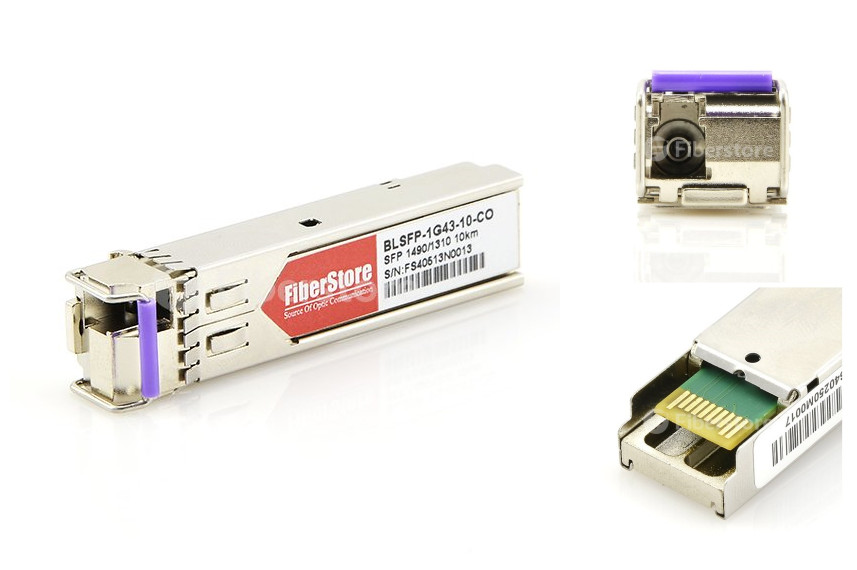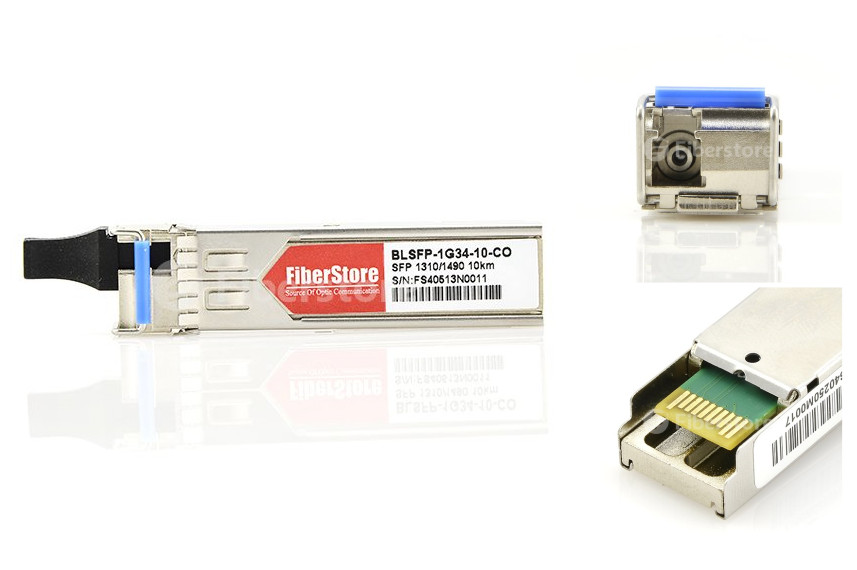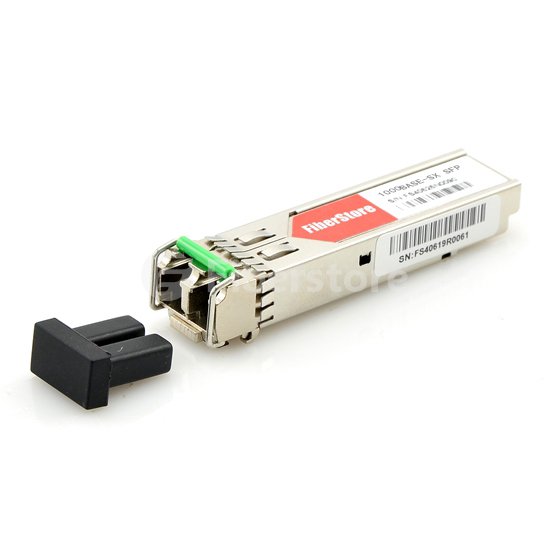In communication networks, many transmission lines need bidirectional transmission. This need leads to the development of Bidirectional (BiDi) transceivers, which can transmit and receive data to/from interconnected equipment through a single optical fiber. BiDi transceivers are fitted with wavelength division multiplexing (WDM) diplexers, which combine and separate data transmitted over a single fiber based on the wavelengths of the light. BiDi transceivers must be deployed in matched pairs, with their diplexers tuned to match the expected wavelength of the transmitter and receiver that they will be transmitting data from or to. In this post, a kind of BiDi transceiver, 1000BASE-BX SFP BiDi transceiver will be introduced.
1000BASE-BX is a part of the Gigabit Ethernet standard related to transmission over fiber optic cable. 1000BASE-BX SFP modules are compliant with SFP Multi-Source Agreement (MSA) specification and SFF-8472, and conform to the IEEE 802.3ah 1000BASE-BX10 standard. 1000BASE-BX SFP modules include 1000BASE-BX-U SFP module and 1000BASE-BX-D SFP module. These two SFP modules must be used in pairs to permit a bidirectional Gigabit Ethernet connection using a single strand of single mode fiber (SMF) cable. These transceivers transmit and receive signals on one fiber strand using two wavelengths in each direction. These hot pluggable optical transceivers consist of two sections: the transmitter section uses 1490nm DFB laser/1310nm Fabry-Perot laser, and the receiver section uses 1310nm/1490nm receiver accordingly. The 1000BASE-BX-D SFP operates at wavelengths of 1490nm TX/1310nm RX, and the 1000BASE-BX-U SFP operates at wavelengths of 1310nm TX/1490nm RX. These transceivers use standard simplex LC connectors for fiber cable connection and provide a long transmission distance of up to 10 km.
- Data rate up to 1.25 Gbps
- Hot-pluggable SFP footprint
- 1490 nm DFB Transmitter and 1310 nm PIN Receiver
- 1310 nm FP Transmitter and 1490 nm PIN Receiver
- Transmission distance up to 10 km
- Simplex LC connector
- Low power dissipation
- Digital diagnostic monitor interface is compliant with SFF-8472
- Compliant with SFP MSA Specification
- Compliant with IEEE 802.3z Gigabit Standard
- RoHS compliance
1000BASE-BX-D SFP supports link length of up to 10km point to point on single mode fiber (1490nm-TX/1310nm-RX wavelength) at 1Gbps bidirectional SFP. This optic uses an LC connector. The picture below show a Cisco GLC-BX-D compatible 1000BASE-BX-D SFP 1490nm-TX/1310nm-RX transceiver. The GLC-BX-D is a small form factor pluggable module for Gigabit Ethernet 1000BASE-BX and Fiber Channel communications. The GLC-BX-D transceiver operates at 1490Tx/1310Rx wavelength. It is compatible with the IEEE 802.3ah 1000BASE-BX10-D standards. A 1000BASE-BX-D device is always connected to a 1000BASE-BX-U device with a single strand of standard SMF.

1000BASE-BX-U SFP supports link length of up to 10km point to point on single mode fiber (1310nm-TX/1490nm-RX wavelength) at 1Gbps bidirectional. This optic uses an LC connector. The communication over a single strand of fiber is achieved by separating the transmission wavelength of the two devices. 1000BASE-BX-D transmits a 1490nm channel and receives a 1310nm signal, whereas 1000BASE-BX-U transmits at a 1310nm wavelength and receives a 1490nm signal. A wavelength-division multiplexing (WDM) splitter integrated into the SFP to split the 1310nm and 1490nm light paths. The GLC-BX-D and GLC-BX-U SFPs also support digital optical monitoring (DOM) functions according to the industry-standard SFF-8472 multisource agreement (MSA). This feature gives the end user the ability to monitor real-time parameters of the SFP, such as optical output power, optical input power, temperature and transceiver supply voltage. The picture below show a Cisco GLC-BX-U compatible 1000BASE-BX-U SFP 1310nm-TX/1490nm-RX transceiver.

- Gigabit Ethernet
- Fiber Channel Links
- Switch to switch interface
- Switched backplane applications
- Pouter/Server Interface
- Other optical transmission systems
New organizational applications, virtualization, and data center consolidation trends are pushing your server I/O requirements to meet higher needs than before. With new BiDi optical technology, SFP BiDi transceivers make it much easier for you to upgrade your networks.
